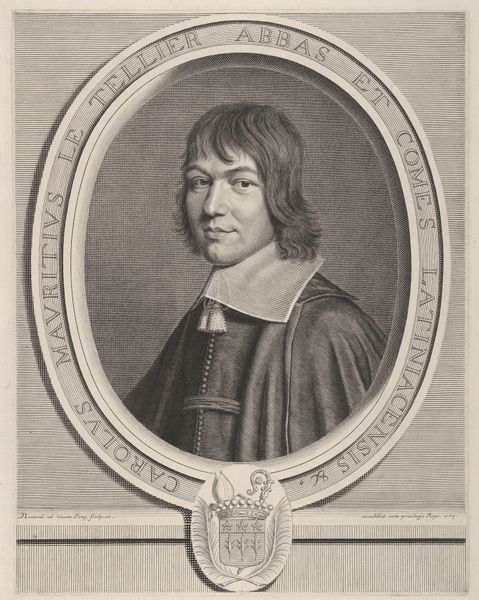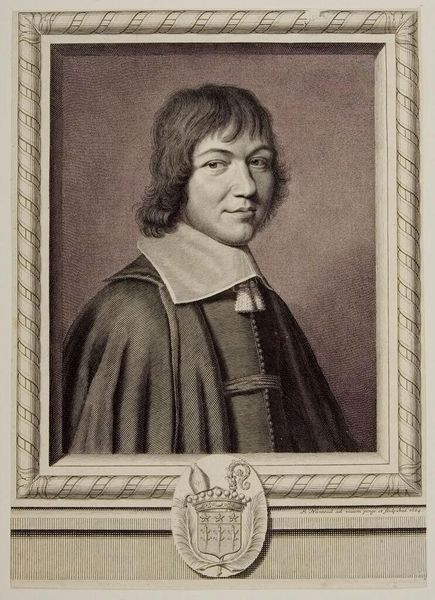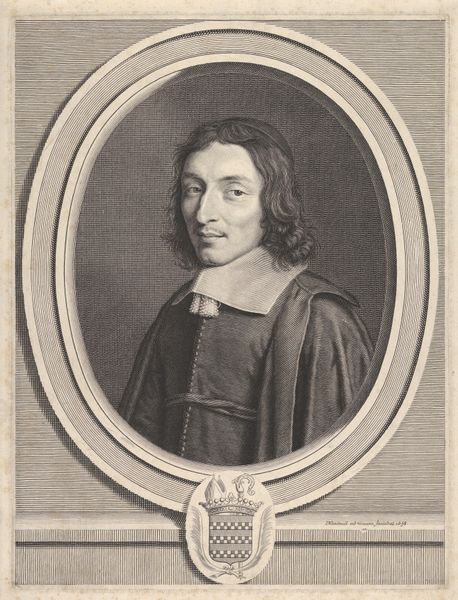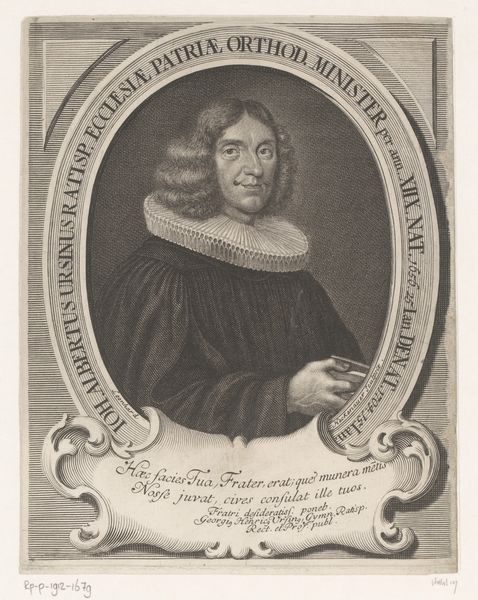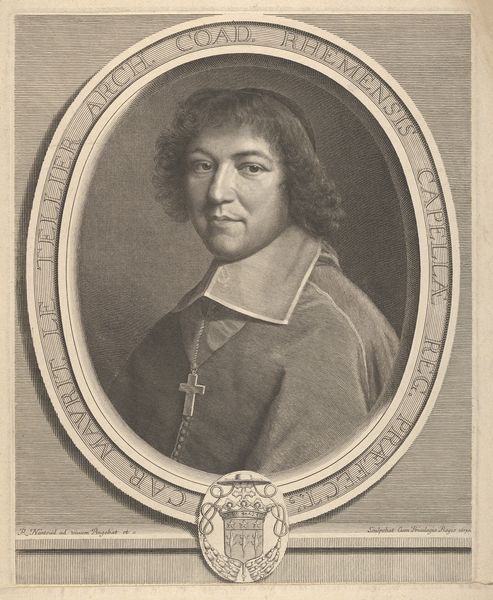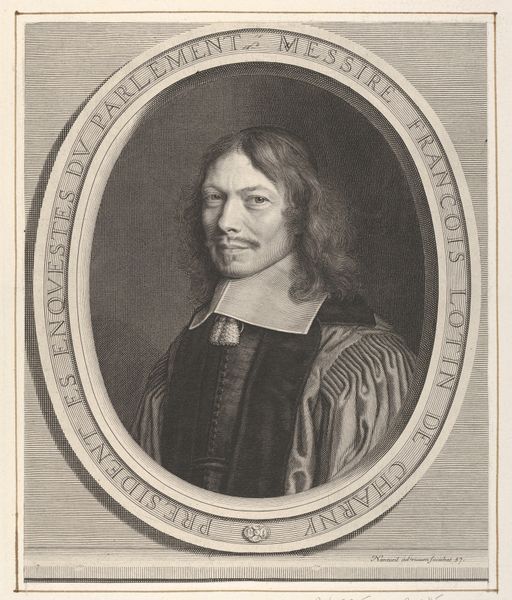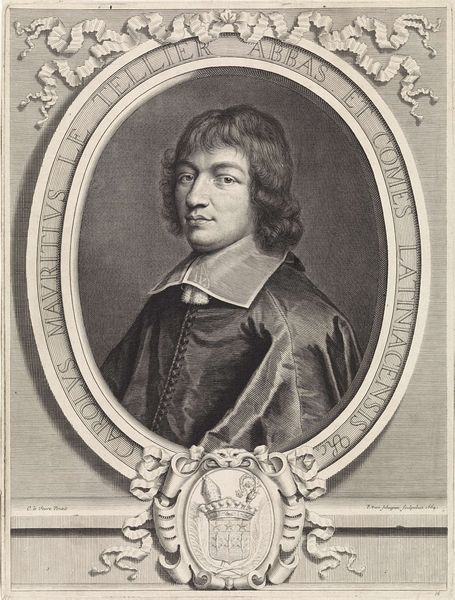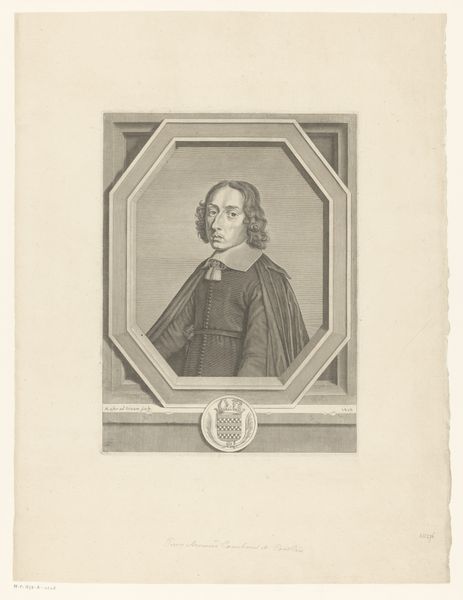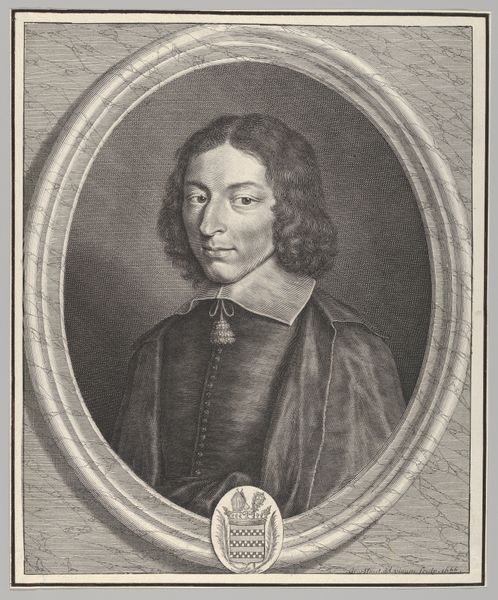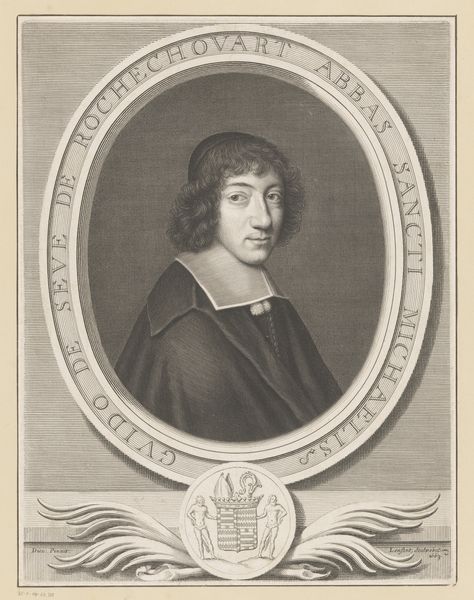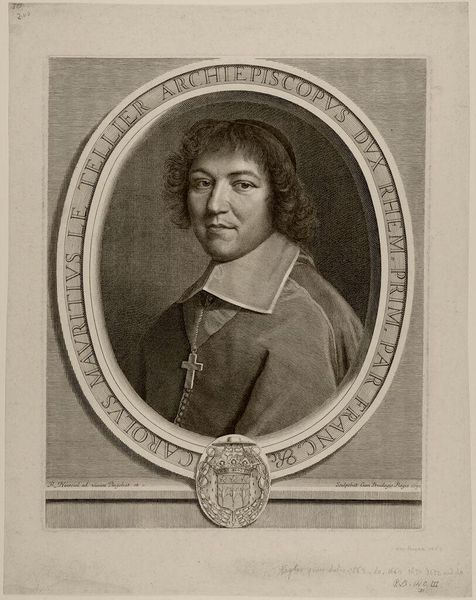
drawing, print
#
portrait
#
drawing
#
baroque
# print
Dimensions: Sheet: 13 3/8 × 10 1/4 in. (33.9 × 26 cm) Plate: 12 3/4 × 9 13/16 in. (32.4 × 25 cm)
Copyright: Public Domain
Curator: Here we have Robert Nanteuil's 1663 print of Charles-Maurice Le Tellier, a fine example of Baroque portraiture. What are your first thoughts? Editor: The overwhelming gray tone strikes me immediately. It's meticulously rendered, but it feels restrained, almost like a study in textures—the silky hair against the crisp linen. Curator: Restrained perhaps by the expectations of representing someone like Le Tellier. He was, after all, the Archbishop of Reims. Nanteuil was clever in capturing Le Tellier’s social standing within the visual vocabulary of the period. Editor: Visual vocabulary indeed. Look at the heraldic shield! The emphasis seems very deliberate. Is it etching? Engraving? Or perhaps a combination of methods? You can tell that the act of production—the lines meticulously carved into the metal—is part of the statement. Curator: I'd agree, it's engraving, a medium that enjoyed considerable popularity during the Baroque era, offering both precision and replicability, which was crucial for disseminating images of powerful figures like Le Tellier across Europe. Prints cemented the reputation of the subject, which impacted the standing of both the patron and the artist. Editor: It makes me wonder about Nanteuil’s workshop. How many apprentices assisted? And how did their labor contribute to Nanteuil’s success? It looks almost mechanically produced given its fineness. Curator: The art market has always influenced art production! Speaking of reputation, consider that prints also offered a form of patronage; Nanteuil made his name creating these portraits, playing a key role in shaping the public’s perception of the French elite. Editor: It really pulls together how this portrait exists as a designed object – created by laborers and meant to create an impression for an elite individual, but in multiples. That the art can be simultaneously precious and repeatable shifts the concept of value. Curator: A worthy final thought. This image offers such a powerful glimpse into the intersecting social, economic and artistic networks of seventeenth-century France. Editor: Indeed. Thinking about the material history definitely transforms my perspective.
Comments
No comments
Be the first to comment and join the conversation on the ultimate creative platform.

